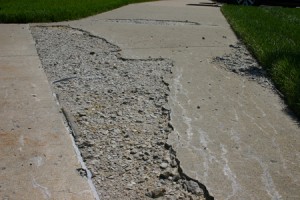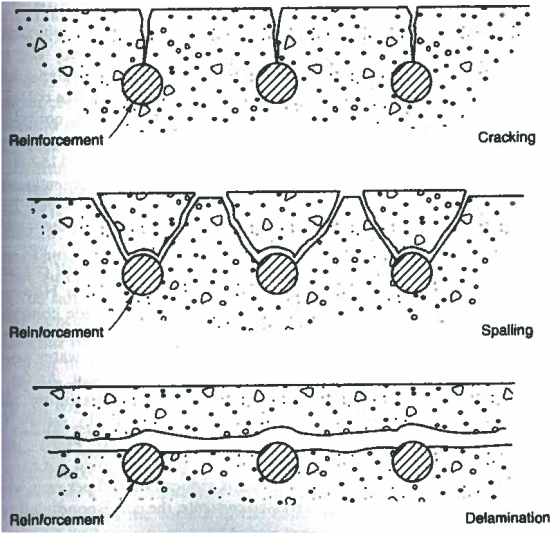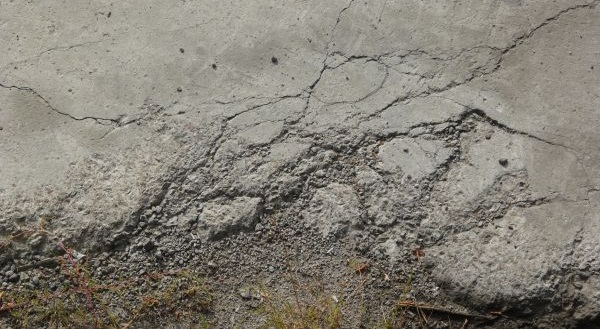In this article, two of the visual defects that might appear on concrete are discussed: Surface Scaling and Spalling of concrete.
Surface Scaling of Concrete
Scaling is a form of disintegration and is due in most part to freeze–thaw reactions which cause the concrete to flake or peel off at the exposed surface.

Scaling is indicative of poor air–void characteristics of the concrete. This form of deterioration is detected through a Visual Condition Survey. The examiner will first notice scattered small patchy sections of peeling or flaking surface. If this is not attended to, it will continue to grow and possibly cover a very large area.
Scaling severity is rated on the basis of the depth of its defect. These different severities are categorized by way of visual analysis:
“Light“ scaling does not expose any coarse aggregate,
“Moderate“ scaling is approximately up to 3 to 10 mm in depth from the surface and exposes some coarse aggregates,
“Severe” scaling has an even larger depth of flaking in which the coarse aggregates become very noticeable and there also may be some mortar loss surrounding the aggregate, and finally,
‘Very Severe‘ scaling is the loss of coarse aggregate particles, as well as surface mortar and surrounding aggregate (it generally is greater than 20 mm in depth).
Spalling of Concrete
A spall occurs when large chunks of concrete break off of a concrete structure. The primary cause of spalling is the corrosion of the rebar within the concrete. The products of steel corrosion which are formed are expansive and thus, take up additional volume causing the concrete to be placed under stress, leading to cracks and eventual spalls due to concrete breaking open and exposing the corroded rebar.

When a spall is noted during a visual survey, the rebar will usually be noticeable by the naked eye. Another cause for a spall is through the process of freezing and thawing of concrete. Water finds its way into the natural pores of the concrete mixture, which was most likely not designed with air–entraining admixtures. Freezing, an exothermic process occurs, causes the water to expand and the concrete to spall under pressure provided by the water on the surrounding concrete paste.
As well, a common cause of spalls in a parking garage is large impacts caused by cars driving into the concrete structure‘s columns or walls. The force exerted by the cars is often enough to cause concrete to break away from the structure resulting in a spall. Usually spalling is common when you work with chert particles of low specific gravity, or with limestone that contains clay, or shale material. As one can imagine, it is not hard to notice when concrete has spalled, in fact, it is quite possibly the most obvious mode of deterioration and all that is required to determine that spalling has taken place is visual confirmation via the Visual Survey.
Other Visual Defects:
